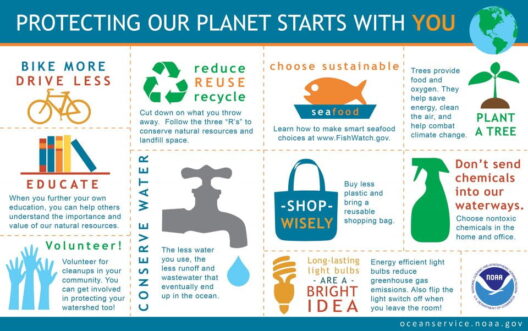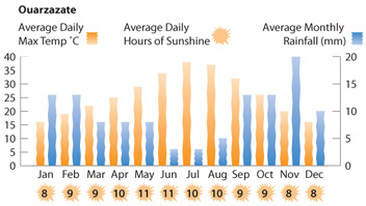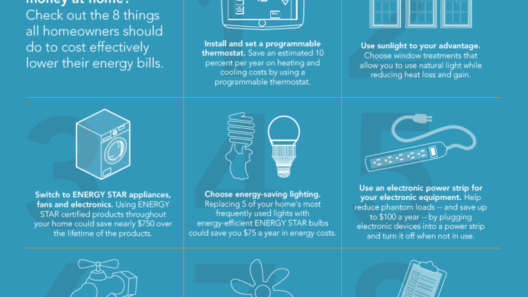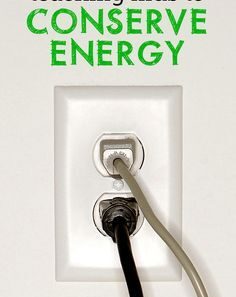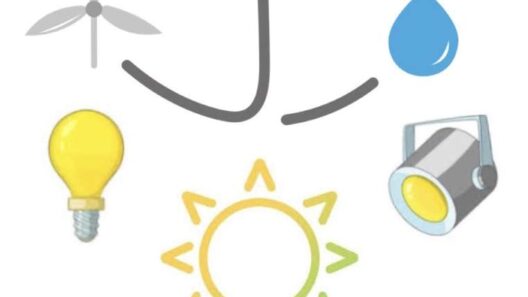In an era where environmental consciousness is paramount, the pursuit of energy conservation has become more than a personal ethic; it’s a tangible savior for both the planet and personal finances. The question lingers: how much money can an individual actually save through energy-efficient practices? With escalating utility costs and alarming indicators of climate change, understanding these savings is pivotal. This exploration dives into the intersection of saving green while going green—establishing how deliberate energy consumption habits can lead to significant financial benefits.
The concept of energy conservation is often met with skepticism. Many believe that small actions yield negligible savings. However, when viewed through the lens of cumulative impact, even minor behavioral adjustments lead to remarkable fiscal outcomes. For instance, implementing straightforward measures such as switching to LED lighting can reduce electricity use by up to 75% compared to traditional incandescent bulbs. According to expert estimates, this simple transition can save an average household about $225 per year, assuming a moderate usage pattern.
Broadening the scope beyond lighting, it’s illuminating to examine appliance usage. Energy-efficient appliances have transformed consumption patterns in countless households. By investing in Energy Star-rated appliances, homeowners can save anywhere from 10% to 50% on energy costs, depending on the appliance type and usage frequency. Over time, the savings accrued from refrigeration, washing machines, and HVAC systems can amount to thousands of dollars, rendering the upfront investment a wise fiscal maneuver.
The refrain “use less, save more” resonates profoundly in the realm of heating and cooling. An astonishing amount of energy—nearly half of a typical household’s energy bill—is consumed in these areas. Simple strategies like programmable thermostats can provide remarkable control over energy expenditure. By automatically adjusting temperatures, households can save approximately $180 annually. Implementing such devices not only lessens energy wastage but conversely bolsters household budgets, creating a win-win scenario.
In addition to technological interventions, behavioral changes can bring forth considerable savings. Simple practices such as turning off lights in unoccupied rooms, unplugging devices that draw phantom energy, and being mindful of water heater settings seem inconsequential yet accumulate into substantial cost reductions over time. For example, utilizing a water heater timer can trim about $400 off a yearly energy bill through reduced heating cycles.
Curiously, the fascination with energy conservation stems not solely from potential savings but also from the deeper awareness of its environmental repercussions. It’s a conundrum—financial savings intertwining seamlessly with ecological responsibility. The average American household emits nearly 14,000 pounds of carbon dioxide annually. By curbing energy consumption, households can substantially reduce their carbon footprint, thereby contributing to the larger battle against climate change. The synergy of personal savings and environmental stewardship fosters a compelling narrative that engages households on multiple levels.
Moreover, energy conservation extends far beyond the monetary and ecological. There’s a growing awareness of the health ramifications tied to energy production and consumption. Traditional energy sources, such as coal and oil, emit pollutants that compromise air quality and precipitate health issues. By opting for cleaner energy alternatives and modifying consumption behaviors, families not only bolster their finances but also cultivate healthier living environments. This holistic perspective engenders a profound appreciation for energy conservation that transcends mere dollars and cents.
Transitioning to renewable energy sources can also culminate in spectacular savings. Solar panels, although requiring initial investment, can decrease electricity bills significantly. Many homeowners have reported savings of $800 or more annually, depending on location and energy needs. Furthermore, with government incentives and tax credits available, the upfront costs soften considerably, enhancing their appeal as a financial stratagem. Beyond fiscal advantages, engaging in renewable energy aligns with global sustainability efforts—offering a palpable sense of contribution to a collective goal.
An intriguing notion arises when considering the concept of energy audits. Conducting a professional energy audit can identify inefficiencies and areas for improvement within a home, guiding targeted efforts toward conservation. These audits, while possibly costing an initial fee, invariably lead to more substantial savings in energy costs—often exceeding the initial investment. Families embracing this proactive approach not only diminish their expenditures but also enrich their understanding of their energy use, facilitating more informed choices in the future.
An essential facet of this discourse is the role of community and advocacy in energy conservation. Collective efforts can amplify individual actions, leading to systemic change. Grassroots campaigns advocating for energy conservation, legislative initiatives promoting incentives for energy-efficient investments, and community programs encouraging shared resources all contribute to a larger savings paradigm. As awareness expands, so does the potential for substantial financial liberation across communities.
Ultimately, the interactive nature of conserving energy posits significant fiscal savings, enhanced health outcomes, and a chance to contribute positively to environmental stewardship. This trifecta forms a compelling case for the integration of energy conservation into daily living. When individuals recognize the profound impact of their actions, not only on their wallets but also on the planet, the allure of saving green while going green becomes undeniably persuasive.
In conclusion, the journey towards energy conservation stretches beyond simple savings; it encapsulates a transformative philosophy of stewardship and responsibility. By participating in this movement, individuals and families tap into a reservoir of potential savings, fostering financial agility while protecting the environment. As society collectively shifts towards more sustainable practices, the prospect of financial and ecological redemption becomes increasingly attainable, inviting everyone to partake in a greener future.



